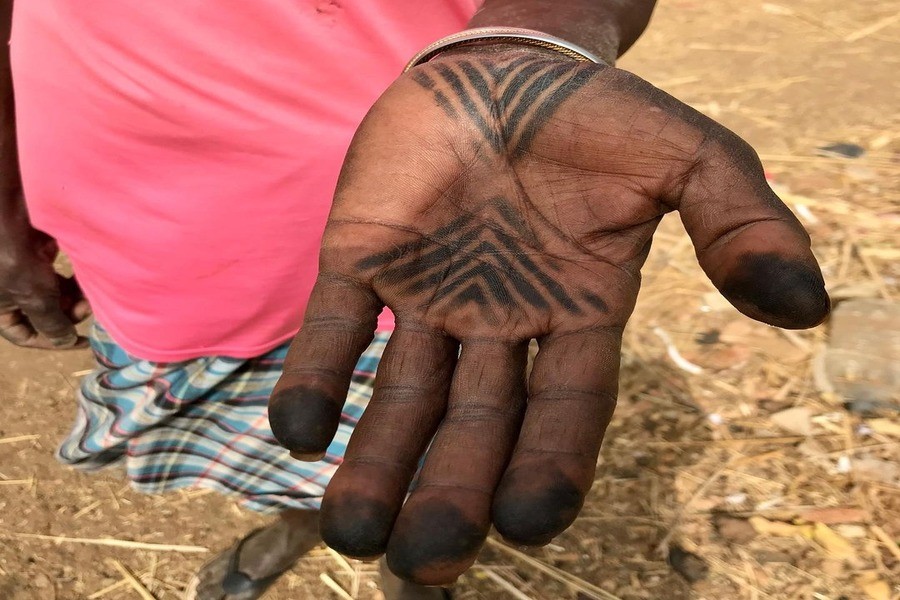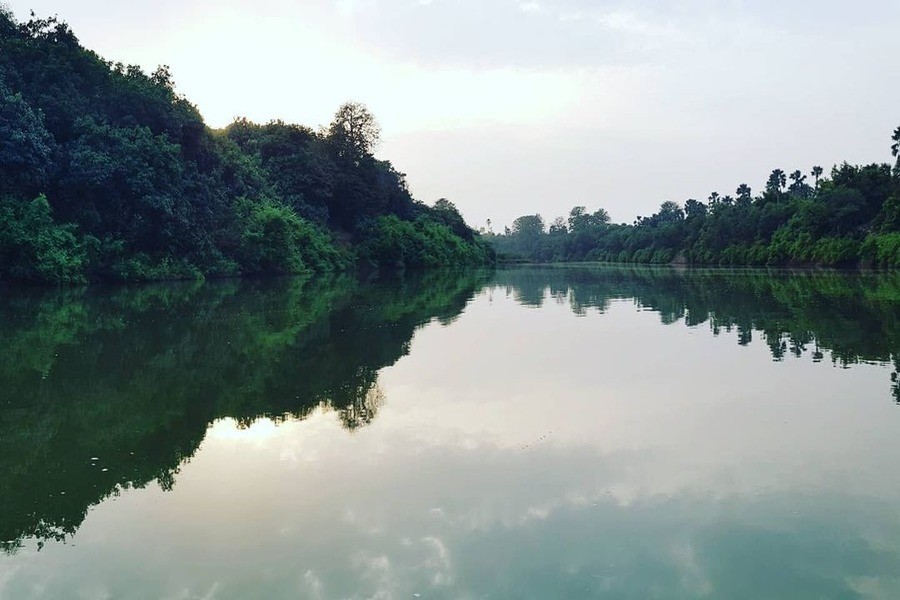Wassadougou is a charming rural village located in the region of Tambacoundaat Senegal. Nestled near the Niokolo Koba National ParkWassadougou enjoys a privileged location in the heart of unspoilt nature and surrounding beauty. Wassadougou plays an essential role as the cultural and natural center of the region. Its unspoilt rural character, rich cultural heritage and proximity to spectacular natural sites make it a popular destination for travelers seeking authenticity and adventure.
Wassadougou is deeply rooted in Senegalese culture, offering visitors a unique opportunity to discover local traditions and customs. The inhabitants, mainly of the Peulh ethnic group, proudly preserve their cultural heritage through their dances, songs and traditional crafts. In addition to its cultural heritage, Wassadougou is surrounded by breathtaking nature. Picturesque landscapes, meandering rivers and vast stretches of savannah create an enchanting atmosphere and invite visitors to explore and connect with nature.
Wassadougou's historical and cultural context
Wassadougou is mainly populated by the Peulh ethnic group, also known as Fulbe. The Peulh are a nomadic, pastoralist ethnic group found in several West African countries. They have a rich cultural tradition and are known for their attachment to their heritage. Wassadougou has an ancient history that goes back many centuries. The village has evolved over time to become an important cultural and community center in the Tambacounda region. The Peulhs of Wassadougou have played a key role in the village's development and have contributed to the preservation of their culture and traditions.
Over the years, Wassadougou has become a gathering place for the region's Peulhs, providing a space where they can celebrate their customs, exchange knowledge and strengthen their cultural identity.
The Peulhs of Wassadougou have a rich tradition of dances, songs and crafts that are characteristic of their culture. Traditional dances, such as the "Borom Saré" and the "Borom Ndogal", are artistic expressions that convey stories, emotions and community values. Folk songs, accompanied by the traditional "xalam" instrument, are an integral part of celebrations and social events. The craftsmanship of the Peulhs of Wassadougou is also remarkable, in particular their work with leather and silver, where they create jewelry, bags and other unique objects that reflect their cultural identity.
Rural lifestyle and traditional activities in Wassadougou
The Wassadougou way of life is deeply rooted in rurality, and traditional activities such as farming, livestock breeding and handicrafts play an essential role in the community. Agriculture is a central activity in the daily lives of Wassadougou's inhabitants. The region's fertile soils enable a variety of crops to be grown, including millet, corn, rice and peanuts.
Farmers use traditional techniques, such as rain-fed agriculture and ancestral cultivation methods, to farm their land. They grow these main crops to meet their food needs and to sell surpluses on local markets.
Livestock farming is also an important part of the local economy and livelihood. The inhabitants of Wassadougou raise livestock, in particular cattle, sheep and goats. Livestock products, such as milk, meat and hides, are used for local consumption and to generate income through their sale on markets. In addition, livestock farming provides other essential resources, such as manure used as fertilizer for crops.
Traditional crafts are another important aspect of life in Wassadougou. The locals are renowned for their craftsmanship, particularly in the making of silver and leather jewelry. Local craftsmen use techniques handed down from generation to generation to create unique pieces, such as necklaces, bracelets and earrings. These jewels are often adorned with traditional and symbolic motifs, reflecting the community's cultural identity. Leatherworking is also a widespread craft skill, with the creation of bags, shoes and other leather objects testifying to the skill and creativity of local artisans.
The natural beauty of Wassadougou
Wassadougou's natural beauty is a remarkable feature of the region and contributes to its unique charm. Wassadougou's picturesque landscapes captivate visitors with their diverse topography, including hills, valleys and verdant plains. The cultivated fields offer a striking visual spectacle with their undulating crops and bright colors, such as the green of the millet fields and the yellow of the cornfields. The rivers that flow through the region add a touch of serenity and freshness to the environment.
Wassadougou is home to a rich biodiversity of flora and fauna. The region is renowned for its lush vegetation, including majestic trees, endemic plants and a wide variety of wildflowers. Wassadougou's forests and nature reserves provide an important habitat for a variety of animal species, such as monkeys, antelopes, colorful birds and reptiles. Nature lovers can enjoy the beauty of the natural landscape, observe birds in their natural habitat and discover the wealth of local flora on hikes or nature walks.
Wassadougou is also home to some magnificent waterfalls and geological formations. The waterfalls, fed by local streams, offer spectacular views and are often surrounded by lush vegetation. Geological formations, such as caves and rocks sculpted by erosion, create unique and fascinating landscapes. They also provide opportunities for visitors to explore and discover.
Meeting the local community
Meeting the local community of Wassadougou presents a valuable opportunity to discover the culture, traditions and way of life of the region's inhabitants. The people of Wassadougou are renowned for their warm welcome and hospitality to visitors. They are often open to sharing their way of life and welcoming strangers into their community, inviting them to take part in community activities such as traditional ceremonies, festivities or shared meals.
Meeting the local community also offers an opportunity for enriching cultural exchange. Visitors have the opportunity to learn about the customs, traditions and beliefs of the Wassadougou community. Locals are often willing to share their knowledge and explain cultural practices such as music, dance, handicrafts and traditional cuisine.
By participating in local activities, such as farming, animal husbandry or handicrafts, visitors can gain a better understanding of traditional practices and the challenges facing the community. Direct interaction with the people of Wassadougou also offers an opportunity to learn traditional skills, share know-how and experience local life in an authentic way.
Meet the local community and learn about the issues it faces. Visitors can learn more about the environmental challenges, socio-economic issues and community development efforts undertaken by the population. This awareness can foster a deeper understanding of local realities and encourage visitors to get involved in support or sustainable development initiatives.
Tourism in Wassadougou
Tourism in Wassadougou is playing an increasingly important role in the region's economic development. The region offers a variety of natural tourist attractions, such as picturesque landscapes, waterfalls and rich biodiversity. Visitors can enjoy hiking, wildlife watching and outdoor relaxation.
In addition to its natural attractions, Wassadougou boasts a rich cultural and historical heritage. Traditional festivals, dances, music and handicrafts attract the interest of tourists. Visitors can discover Wassadougou's history by visiting historic sites, local museums and taking part in cultural activities.
Wassadougou is increasingly committed to the development of ecotourism and sustainable practices. Nature conservation initiatives, environmental awareness and local community involvement are encouraged. Visitors can take part in ecotourism activities such as eco-friendly hikes, visits to sustainable development projects or homestays to support the local community.
Tourism in Wassadougou has a significant economic impact. It contributes to job creation and income generation for local residents. Tourism initiatives also promote the development of infrastructure, services and business opportunities in the region. Visitors can support the local economy by choosing accommodation, restaurants and shops run by local people, buying local handicrafts and taking part in community activities.
In conclusion, Wassadougou offers an exceptional cultural and natural wealth that deserves to be discovered and supported. The region abounds in natural attractions such as picturesque landscapes, waterfalls and remarkable biodiversity. Its vibrant culture, with festivals, dances and traditional crafts, is a real invitation to immerse yourself. We urge readers to visit Wassadougou and support this authentic Senegalese community. By choosing to stay with local people, take part in local activities and buy handicrafts, visitors will be contributing directly to the region's economic and social development. It is also essential to preserve Wassadougou's local culture and natural environment for future generations. By adopting a sustainable approach to tourism, we can ensure the preservation of this precious heritage. Respecting traditions, minimizing our impact on the environment and supporting conservation initiatives are important actions to take during our visit. Together, we can preserve Wassadougou's authenticity, preserve its magnificent culture and nature, while providing economic opportunities for the local people. Come and discover Wassadougou, a jewel of Senegal that is sure to fill you with wonder and leave you with unforgettable memories.















